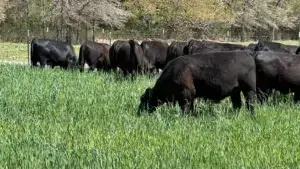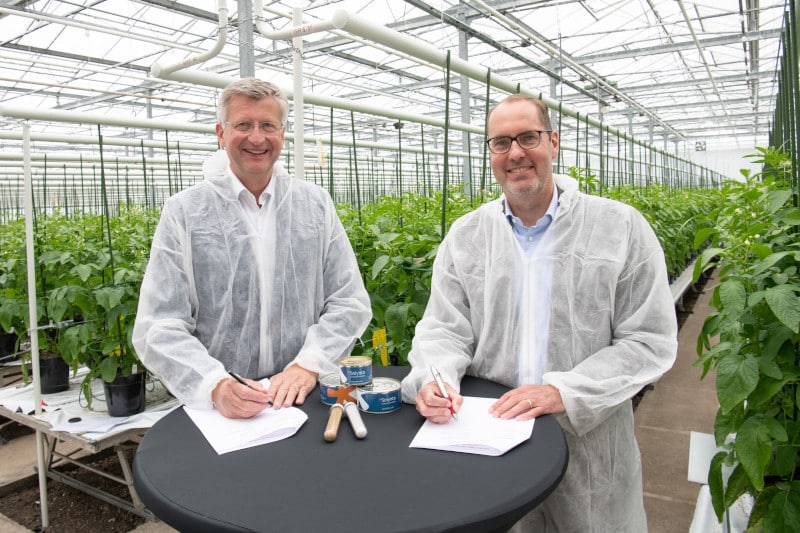New research funding will ensure forage crops continue to be improved through new variety development. Here’s a look at some of the latest innovations in alfalfa and tall fescue research.
Alfalfa researchers in the United States will soon benefit from nearly $2 million in new federal funding.
The Alfalfa and Forage Research Program (AFRP), administered through the U.S. Department of Agriculture’s National Institute of Food and Agriculture (NIFA), is mulling over applications for $1.85 million in research grants announced earlier this year. Successful applicants will be announced in November.
As the fourth most valuable crop in the United States behind corn, soybeans and wheat, alfalfa has a foothold, but because the alfalfa industry doesn’t have a checkoff to fund research like other row-crop commodities, it’s yield improvement has not kept pace with other cropping choices.
The AFRP, initiated in 2014, is designed to fund research and Extension programs that improve alfalfa forage and seed yield and train producers to apply best practices.
“Research into critical agricultural science areas like this reach their full potential when coupled with Extension activities,” says Sonny Ramaswamy, NIFA director.
Applicants for these grants should keep in mind the importance of reaching out to producers and farmers to share information and apply research findings.
“Integrating these two important functions is how agricultural solutions move from the lab to the farm and vice versa,” he says.
According to USDA, applicants needed to consider one or more of the following priorities when submitting proposals to the AFRP:
• Improving alfalfa forage and seed yield through better nutrient, water and/or pest management.
• Improving persistence of alfalfa stands by lessening biotic or abiotic stresses.
• Improving alfalfa forage and seed harvesting and storage systems to optimize economic returns.
• Improving estimates of alfalfa forage quality as an animal feed to increase forage usage in animal feeds.
• Breeding to address biotic and abiotic stresses that impact forage yield and persistence and the production of seed for propagation.
Chris Agee, who serves as president of the American Forage and Grassland Council, says funding for research initiatives such as those offered through the AFRP program might reflect a growing recognition of the importance of forage crops. Agee says for years the value of forage grassland has been underestimated in the U.S., even though it accounts for so much farmland.
“There are so many benefits that we tend to take them for granted,” he adds, pointing to the value of forage crops in crop rotations, wildlife habitat restoration and water quality improvement. Another important consideration is that when used as cover crops, forage grasses help prevent soil erosion.
“If you want to look back at the dust bowl era, you can certainly see the importance of having some sort of cover on the ground,” Agee says.

Photo: Cornell University.
Breeding for Future Challenges
He explains that: “We always need to have forage research, because you never know when another insect pest that affects grasses will emerge. There are some lately that have reared their ugly heads, in Bermuda grass particularly.”
Dairy and other livestock farmers in the northern U.S. recently benefitted from alfalfa research at Cornell University in Ithaca, N.Y., with the release of several new varieties that combat devastating insect pests as well as improve yields and forage quality.
One new variety, SW 9558SBR, targets alfalfa snout beetle, a growing pest in northern New York that was recently spotted across the St. Lawrence River in Ontario, Canada. There are concerns it could spread into neighboring states, as well.
“It’s a high yielding variety that provides some protection against alfalfa snout beetle, and it’s got a good line-up of the common disease resistances that we need to have in varieties in this part of the country,” says Donald Viands, a professor of plant breeding and genetics in the School of Integrative Plant Science at Cornell University. “We’ve been continuing our breeding program so that we can in the near future release some new varieties that have an even a higher level of resistance against alfalfa snout beetle.”
The second new variety, SW 315LH, combats another insect threat, the potato leafhopper, which is one of the worst pests on alfalfa in the country. Viands says the potato leafhopper doesn’t overwinter in New York, but arrives each year from the south carried by early spring thunderstorms.
SW 315LH was developed specifically for conditions in the state and “has a really high level of resistance to potato leafhopper,” Viands says, adding it also provides good protection against Verticillium wilt.
Viands says Cornell researchers have also been working on the next generation of their potato leafhopper resistant variety and that it should be ready to release in the not-too-distant future.
“A goal of ours is to get even better levels of resistance to potato leafhopper, alfalfa snout beetle and other pests,” Viands shares. “We would like to develop a variety that combines those two traits — potato leafhopper and alfalfa snout beetle resistance.”
Julie Hansen, a senior research associate at Cornell, led the effort to develop the potato leafhopper resistant variety, while Cornell research support specialist Jamie Crawford performed the hands-on breeding work on the alfalfa snout beetle-resistant variety.
Viands notes Cornell’s alfalfa research team will continue to develop varieties with higher forage quality — “something we’ve done pretty successfully in the past” — such as a recently released variety that was bred for higher levels of pectin concentration.
Viands believes continued research into improved varieties of alfalfa and other forage crops is essential.
“The broader implications on agriculture revolve mostly around livestock producers, especially in the dairy industry, being able to economically produce forage for feed,” Viands says. “Higher forage yield and quality, combined with multiple disease and insect resistances, enable forage to be produced more economically, thus enhancing economic vitality of livestock operations.”
New Tall Fescue Variety
Much of the talk in forage research these days revolves around new innovations in alfalfa, such as low-lignin varieties. But alfalfa isn’t the only forage crop where researchers are making headway in forging new, improved varieties.
One example is the development of a new tall fescue variety that is nontoxic to grazing animals called Lacefield MaxQ II. It was developed by University of Kentucky plant breeder Tim Phillips through selections made from endophyte-free Kentucky 31 fescue and related lines. He named the variety for recently retired U.K. professor Garry Lacefield to honor his numerous contributions to the forage industry and to the college.
Lacefield MaxQ II contains a novel endophytic fungus developed by AgResearch in New Zealand. This endophyte does not produce alkaloids that can cause fescue toxicosis, a disease that primarily affects cattle, but can also negatively impact pregnant mares and milk producing goats. The variety does have other active alkaloids that are beneficial and give it drought tolerance, insect resistance and help with vigor.
“It has the persistence and performance of the endophyte found in Kentucky 31, but it doesn’t have the bad qualities of that endophyte,” Phillips says. “It’s the best of both worlds.”
Lacefield MaxQ II has been trialed for 12 years in on-farm trials, university research farms, as well as at private farms in Kentucky and others from Michigan to Mississippi. Phillips says it has tested well in all locations for seedling vigor, high yield potential, grazing tolerance, live weight gains by stocker cattle and resistance to winter injury.
Pennington Seed is increasing seed inventory and expected to make Lacefield MaxQ II commercially available in 2017. Phillips admits one of the marketing challenges could be convincing farmers to forgo their reliance on the decades-old forage Kentucky 31, which continues to dominate the tall grass fescue market, despite its adverse effects on grazing animals, for new and improved varieties like Lacefield MaxQ II.
“We can improve the palatability, disease resistance, and all those other traits so they’re better than the older varieties, [but] when there’s not an interest in replacing something old with something new, then… there’s less incentive to keep improving varieties,” he says.
Phillips maintains a different mindset is required for progress to proceed in tall grass fescue and other forage grasses.
“Very few farmers would be growing a 50-year-old variety of alfalfa,” he adds. “If you look at alfalfa and corn and other crops, the new varieties are so superior to those that farmers’ grandparents were growing.”











